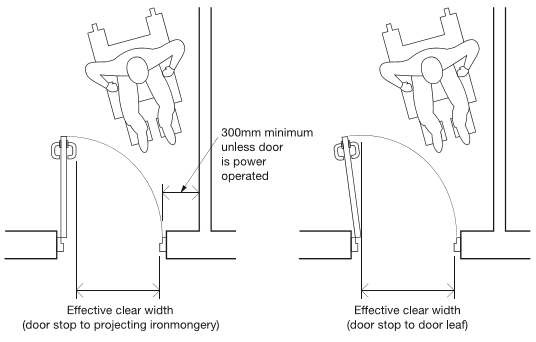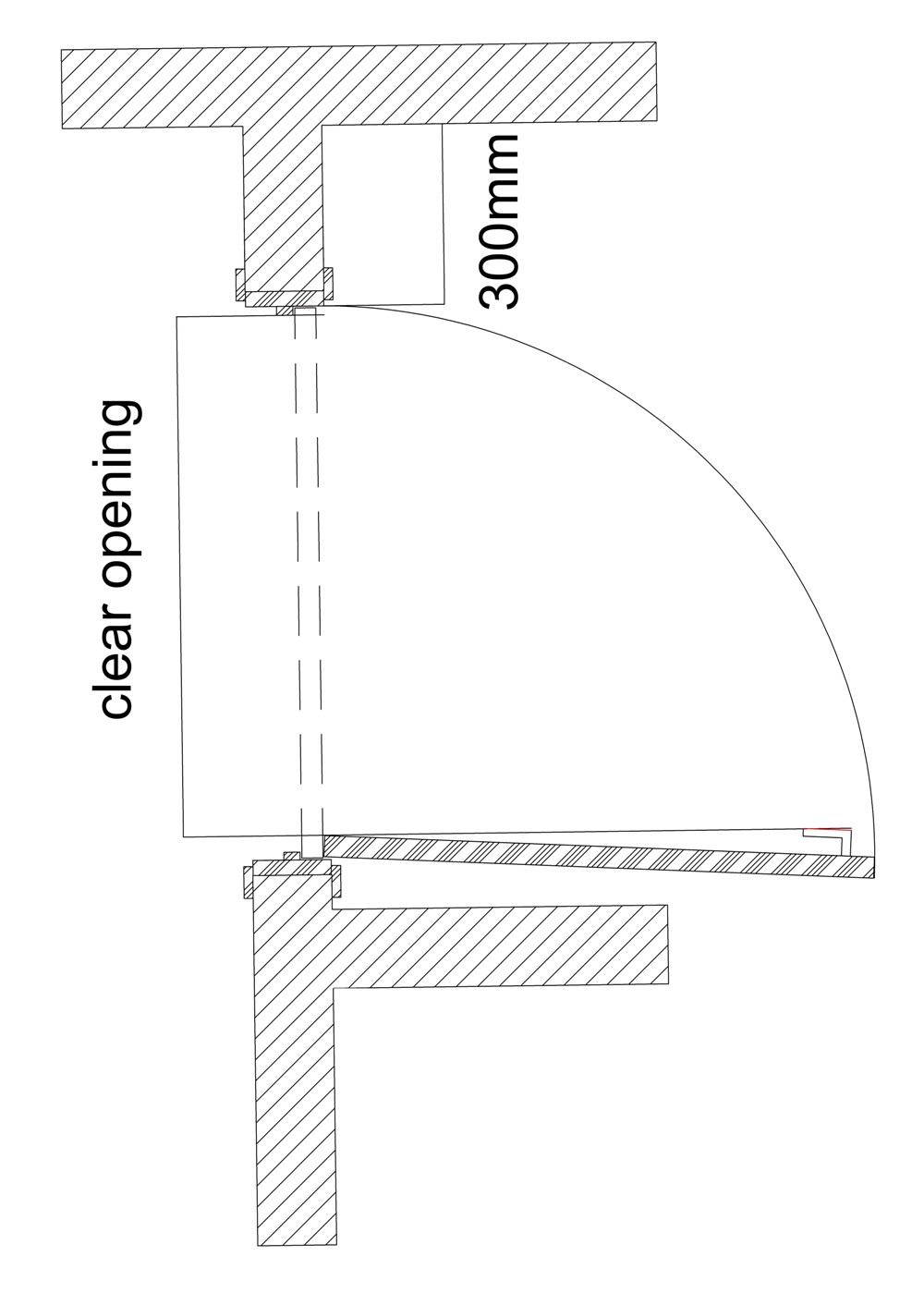Door clear opening width
Approved document M, ‘Access to and use of buildings', requires that a minimum clear width is provided by door openings.
According to the approved document, the effective clear width of a door ‘…is the width of the opening measured at right angles to the wall in which the door is situated from the outside of the door stop on the door closing side to any obstruction on the hinge side, whether this be projecting door opening furniture, a weather board, the door or the door stop’
The minimum allowable clear opening widths for dwellings are set out below:
| Doorway clear opening width (mm) | Corridor clear passageway width (mm) |
| 750 or wider | 900 (when approached head on) |
| 750 | 1200 (when approach is not head-on) |
| 775 | 1050 (when approach is not head-on) |
| 800 | 900 (when approach is not head on) |
For buildings other than dwellings, the minimum allowable clear opening widths are:
| Direction and width of approach | New buildings (mm) | Existing buildings (mm) |
| Straight-on | 800 | 750 |
| At right angles to an access route at least 1,500 mm wide | 800 | 750 |
| At right angles to an access route at least 1,200 mm wide | 825 | 775 |
| External doors to buildings used by the general public. | 1000 | 775 |
The clear opening width can be calculated as:
- The width of the door leaf.
- Plus the gap between the leading edge of the door and the frame when the door is closed.
- Minus the width of the door stop at the leading edge of the door.
- Minus the thickness of the door leaf (or the door stop if that is wider).
- Minus the width of any obstructing door furniture (such as the door handle) that projects into the opening when the door is open. If the door opens to more than 90°, door furniture may not obstruct the clear opening width.
Unless a door is powered, there must be a 300 mm nib beyond the leading edge of the door to allow wheelchair users to properly access the handle.
[edit] Find out more
[edit] Related articles on Designing Buildings Wiki
Featured articles and news
Infrastructure that connect the physical and digital domains.
Harnessing robotics and AI in challenging environments
The key to nuclear decommissioning and fusion engineering.
BSRIA announces Lisa Ashworth as new CEO
Tasked with furthering BSRIA’s impressive growth ambitions.
Public buildings get half a million energy efficiency boost
£557 million to switch to cleaner heating and save on energy.
CIOB launches pre-election manifesto
Outlining potential future policies for the next government.
Grenfell Tower Inquiry announcement
Phase 2 hearings come to a close and the final report due in September.
Progress from Parts L, F and O: A whitepaper, one year on.
A replicated study to understand the opinion of practitioners.
ECA announces new president 2024
Electrical engineer and business leader Stuart Smith.
A distinct type of countryside that should be celebrated.
Should Part O be extended to existing buildings?
EAC brands heatwave adaptation a missed opportunity.
Definition of Statutory in workplace and facilities management
Established by IWFM, BESA, CIBSE and BSRIA.
Tackling the transition from traditional heating systems
59% lack the necessary information and confidence to switch.
The general election and the construction industry
As PM, Rishi Sunak announces July 4 date for an election.
Eco apprenticeships continue help grow green workforce
A year after being recognised at the King's coronation.
Permitted development rights for agricultural buildings
The changes coming into effect as of May 21, 2024.























